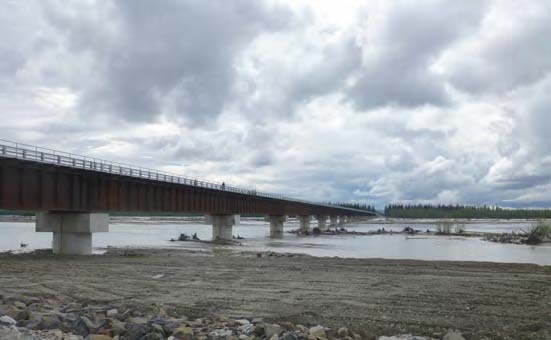Shell files 2015 Chukchi Sea exploration plan
Shell has filed a revised exploration plan with the Bureau of Ocean Energy Management (BOEM) for exploration drilling in the Chukchi Sea in the open water season of 2015. However, the company has not yet made a final decision on whether to proceed next summer.
Under Shell’s plan, the company would use the drillship Noble Discoverer and a semi-submersible rig, the Polar Pioneer, to drill in the Chukchi at the company’s Burger prospect, about 80 miles offshore the west end of the North Slope. Both rigs would drill simultaneously and act as each other’s relief-well backup in the event of a blowout on one of the wells. The plan proposes multiple drilling seasons over several years.
Limited drilling occurred in 2012 on one well in the Chukchi and another in the Beaufort Sea. The 2013 and 2014 seasons were called off because of equipment issues and litigation, as well as regulatory uncertainty.
“We continue to take a methodical approach to this exploration phase and will only proceed with a program that meets the conditions necessary to proceed safely and responsibly,” said Shell’s Megan Baldino to Petroleum News.
Before Shell can drill offshore, legal issues in federal courts must be resolved and permits from federal agencies must be issued. BOEM is in the process of completing a new court-ordered supplemental environmental impact statement on exploratory drilling in the Chukchi Sea. A draft is expected to be released in late October with a final record of decision by late March.
State presses feds on ANWR exploration plan
The State of Alaska has filed a motion for summary judgment in its ongoing litigation in the U.S. District Court for the District of Alaska to order the federal government to allow exploration inside the coastal plain or “Section 1002” area of the Arctic National Wildlife Refuge (ANWR). The motion challenges the U.S. Fish & Wildlife Service’s (USFWS) refusal to consider the state’s carefully developed geophysical exploration plan for the coastal plain. The state’s plan complies with existing federal law authorizing the gathering of up-to-date scientific information about the oil and gas potential of the coastal plain.
“The state must pursue litigation with Washington to explore ANWR because the information that will be gained from our plan is invaluable to both Alaska and the United States as a whole,” Governor Parnell said. “Our legal position is strong, and the national interest is best served by understanding what hydrocarbon resources underlie the coastal plain, and how they could support our economic and energy security.”
In the motion the state asserts exploration of this area was mandated by the Alaska National Interest Lands Conservation Act and is authorized by the plain language of law today. Conversely, the Obama administration has claimed that the USFWS has no authority to review the state’s plan, and therefore has refused to consider it.
The state’s exploration plan was submitted to Secretary of the Interior Sally Jewell in July of 2013 and complies with all existing USFWS regulations. The plan calls for using advanced threedimensional seismic imaging to provide valuable information about the extent and accessibility of the significant oil and gas resources in the 1002 area.
No drilling is proposed in the state’s plan and any in the future would require congressional approval.
Tanana River Crossing is Alaska’s longest

The Alaska Railroad Corporation’s Tanana River Crossing at Salcha is the longest bridge in Alaska at over a half-mile in length. The bridge was completed in early August.
Located 35 miles southeast of Fairbanks, the 3,300-foot, 19-pier crossing is the first phase in the Northern Rail Extension (NRE) project to construct and operate a new rail line in the areas between North Pole and Delta Junction. When completed, NRE will include 80 miles of new rail.
The proposed line will provide freight and potentially passenger services. Meanwhile, the bridge will provide the military immediate access to vast training grounds in the Tanana Flats.
The $188 million bridge was funded by a $104 million appropriation from the Department of Defense and $84 million from the state. For additional information on the crossing, visit alaskarailroad.com.
Susitna-Watana studies continue
Crews have been in the field this summer compiling information to complete dozens of studies on the Susitna-Watana Hydroelectric Project.
Susitna-Watana is a planned major new generation resource for Alaska’s Railbelt. The Alaska Energy Authority (AEA) is leading the multi-year effort to advance the project.
The project would generate 2.8 million megawatt-hours of energy per year. This is equivalent to Chugach Electric Association’s (CEA) 2013 power sales. The project would provide about half of the electric energy used in the Railbelt annually.
Like Bradley Lake and other hydro projects, Susitna-Watana is expected to help stabilize electric power prices. It would reduce the amount of natural gas CEA would otherwise have to purchase at fluctuating prices. In 2013, 87 percent of the power CEA sold came from natural gas, 12 percent from hydro, and two percent from wind.
The 58 studies will support a license application AEA envisions filing in 2016 with the Federal Energy Regulatory Commission. A determination on the license could take a couple of years. If granted, construction would follow, with the project becoming operational in 2025.
Return to newsletter headlines